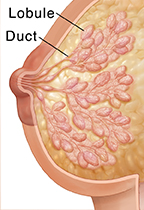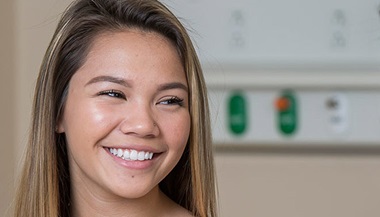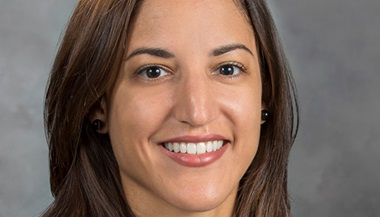Normal Breast Development and Changes
What is normal breast development?
Breast development is a vital part of a woman’s reproduction. Breast development happens in certain stages during a woman's life: first before birth, again at puberty, and later during the childbearing years. Changes also happen to the breasts during the menstrual cycle and when a woman reaches menopause.
When does breast development begin?
Breasts begin to form while the fetus is still growing in the uterus. This starts with a thickening in the chest area called the mammary ridge or milk line. By the time a baby girl is born, nipples and the beginnings of the milk-duct system have formed.
Breast changes continue to happen over a person’s life. The first thing to develop are lobes, or small subdivisions of breast tissue. Mammary glands develop next and consist of 15 to 24 lobes. Mammary glands are influenced by hormones activated in puberty. Shrinkage (involution) of the milk ducts is the final major change that happens in the breast tissue. The mammary glands slowly start to shrink. This often starts around age 35.
What breast changes happen at puberty?
As a girl approaches her teen years, the first visible signs of breast development begin. When the ovaries start to make and release (secrete) estrogen, fat in the connective tissue starts to collect. This causes the breasts to enlarge. The duct system also starts to grow. Often these breast changes happen at the same that pubic hair and armpit hair appear.
Once ovulation and menstruation begin, the maturing of the breasts begins with the formation of secretory glands at the end of the milk ducts. The breasts and duct system continue to grow and mature, with the development of many glands and lobules. The rate at which breasts grow is different for each young woman.
| Female breast developmental stages | |
|
Stage 1 |
Preteen. Only the tip of the nipple is raised. |
|
Stage 2 |
Buds appear, and breast and nipple are raised. The dark area of skin around the nipple (the areola) gets larger. |
|
Stage 3 |
Breasts are slightly larger, with glandular breast tissue present. |
|
Stage 4 |
The areola and nipple become raised and form a second mound above the rest of the breast. |
|
Stage 5 |
Mature adult breast. The breast becomes rounded and only the nipple is raised. |
What cyclical changes happen to the breasts during the menstrual cycle?
Each month, women go through changes in the hormones that make up the normal menstrual cycle. The hormone estrogen is made by the ovaries in the first half of the menstrual cycle. It stimulates the growth of milk ducts in the breasts. The increasing level of estrogen leads to ovulation halfway through the cycle. Next, the hormone progesterone takes over in the second half of the cycle. It stimulates the formation of the milk glands. These hormones are believed to be responsible for the cyclical changes that many women feel in their breasts just before menstruation. These include swelling, pain, and soreness.
During menstruation, many women also have changes in breast texture. Their breasts may feel very lumpy. This is because the glands in the breast are enlarging to get ready for a possible pregnancy. If pregnancy does not happen, the breasts go back to normal size. Once menstruation starts, the cycle begins again.
What happens to the breasts during pregnancy and milk production?
Many healthcare providers believe the breasts are not fully mature until a woman has given birth and made milk. Breast changes are 1 of the earliest signs of pregnancy. This is a result of the hormone progesterone. In addition, the dark areas of skin around the nipples (the areolas) begin to swell. This is followed by the rapid swelling of the breasts themselves. Most pregnant people feel soreness down the sides of the breasts, and nipple tingling or soreness. This is because of the growth of the milk duct system and the formation of many more lobules.
By the fifth or sixth month of pregnancy, the breasts are fully capable of making milk. As in puberty, estrogen controls the growth of the ducts, and progesterone controls the growth of the glandular buds. Many other hormones also play vital roles in milk production. These include follicle-stimulating hormone, luteinizing hormone (LH), prolactin, oxytocin, and human placental lactogen (HPL).
Other physical changes happen as well. These include the blood vessels in the breast becoming more visible and the areola getting larger and darker. All these changes are to prepare for breastfeeding the baby after birth.
What happens to the breasts at menopause?
By the time a woman reaches her late 40s and early 50s, perimenopause is starting or is well underway. At this time, the levels of estrogen and progesterone begin to change. Estrogen levels dramatically decrease. This leads to many of the symptoms often linked to menopause. Without estrogen, the breast’s connective tissue becomes dehydrated and is no longer elastic. The breast tissue, which was prepared to make milk, shrinks and loses shape. This leads to "saggy" breasts.
People who are taking hormone therapy may have some of the premenstrual breast symptoms that they had while they were still menstruating, such as soreness and swelling. But if the breasts were saggy before menopause, this will not change with hormone therapy.






